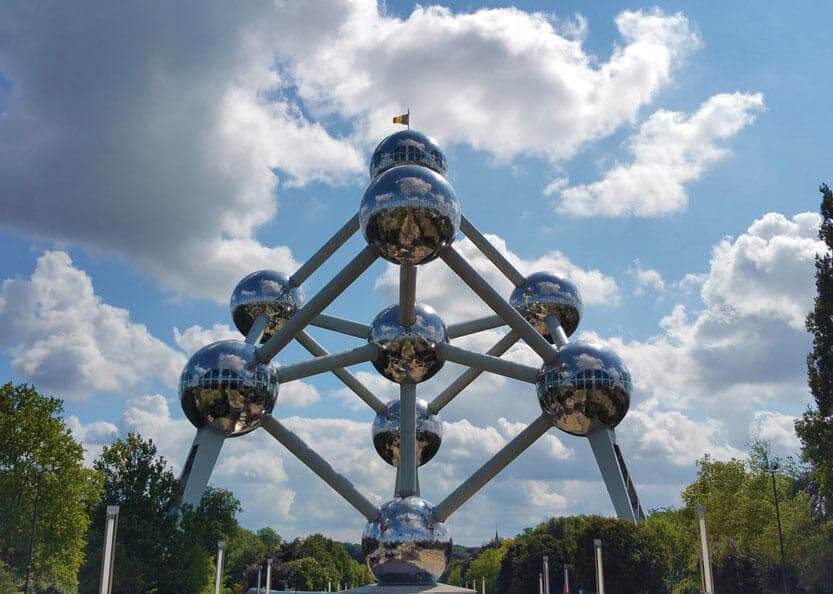Post of the month
The mute who says it all
- He blew the socks off America’s Got Talent 2016
- A source of inspiration for business leaders?
A core principle of our work, which we pass on to all our programme participants, is to keep our attention on the other – their needs, their potential, their responses – rather than on ourselves.
‘Tape Face’ rose to fame in the 2016 run of America’s Got Talent. We may not hear his voice on stage, but some reckon that his character can be seen as a metaphor for what leadership – not to mention communication – should be:
https://www.paulrutherford.com/single-post/2017/05/18/TAPE-FACE-LEADERSHIP
Performer of the month
Can you guess?
- Stories, emotions.
- Generosity, energy.
From our office in Belgium, home of one of the greatest singer songwriters ever, another reminder that language is not simply words…
What do you think?
https://www.youtube.com/watch?v=bPJAydTtoDw
What’s in it for you?
Offer meaning
- A good presentation conveys stories
- Stories convey meaning
If yet another distinction were needed between an oral presentation and a document, we could say that a presentation creates meaning, whereas a document spells it out. Nancy Huston writes: “Our specialism, our birth right, our obsession, our fame is the “why?”. Why the why? Out of what does it arise? The why arises out of time. And out of what does time arise? From the fact that, alone among all earthly living creatures, humans know they are born and they will die. These two truths give us what even our closest relatives – chimpanzees and bonobos – do not have: the sense of a whole life. We alone perceive our existence on Earth as a meaningful trajectory. An arc. A curve from birth to death. A shape that develops over time, with a beginning, twists and turns, and an end. In other words: a story.”*
A presentation therefore can be seen as a moment in this great existential arc. It must convey “a meaning that makes sense within the greater Meaning”. That’s the point of telling stories: to describe our experience, our knowledge, our questions in a way that makes connections between them and offers meaning to our audience.
This can’t be done through the bullet points or arid factual slides that usually make up business presentations.
(*) Huston, N. (2008), The Tale-Tellers: a Short Study of Humankind. McArthur & Co.
And what else?
Anniversary of an unexpected bestseller…
- Genre: mathematical saga.
- Bonus: observing the evolution of scientific knowledge.
Fermat’s Last Theorem** by Simon Singh was published 20 years ago but remains a gripping tale, skilfully weaving epic adventure, suspense, history and understanding. Singh traces a 350-year journey in the quest for a mathematical proof that just wouldn’t reveal itself, driving the best minds of their times to distraction. Equally fascinating is the realisation that mathematics, believed at school to describe reality in the most accurate and reliable way, turns out, from another perspective, to be an exercise in pure imagination.
(**) Singh, S. (1997), Fermat’s Last Theorem. Fourth Estate.
To practise
The warm up: a booster shot
- Energy, energy, energy…
- …and more energy!
The warm up lacks friends. It’s often overlooked, and then we realise that our performance as a presenter could have been ten times better if we’d bothered… But what’s really cool is that we can develop our own way of warming up, as long as it includes (1) getting the energy moving throughout the body, (2) stretching and (3) waking up the different muscles of the mouth: jaws, lips, tongue and palate.
For example:
Before speaking, jog on the spot, do a couple of jumping jacks, punch an imaginary punchbag, stretch gently and repeat a couple of sentences from your presentation while over-articulating. This will give you an advantage over those who present before and after you – guaranteed! A professional performer would never step out onto a stage without warming up! Never, ever!
Najberg Milne news
Forthcoming open course dates in London, Brussels and Paris
– London: 29 & 30 November (Winning Hearts and Minds). Please contact us in London at: info@najbergmilne.com.
– Brussels: 1 & 2 February (Captiver & Convaincre). Please contact us for the next date in Brussels at: info-belgium@najbergmilne.com.
– Paris: 15 & 16 March (Captiver & Convaincre). Please contact us in Paris at: info-france@najbergmilne.com.
Link of the month
What’s on the other side of fear
- We’re scared when there’s no reason…
- …but not when we should be
Will Smith’s personal anecdote graphically illustrates the role our mind plays in creating fear and what happens when we keep going… Some will agree with his metaphysical explanation, others will favour a more psychological one. No matter, it’s a powerful demonstration…
 Najberg Milne
Najberg Milne


